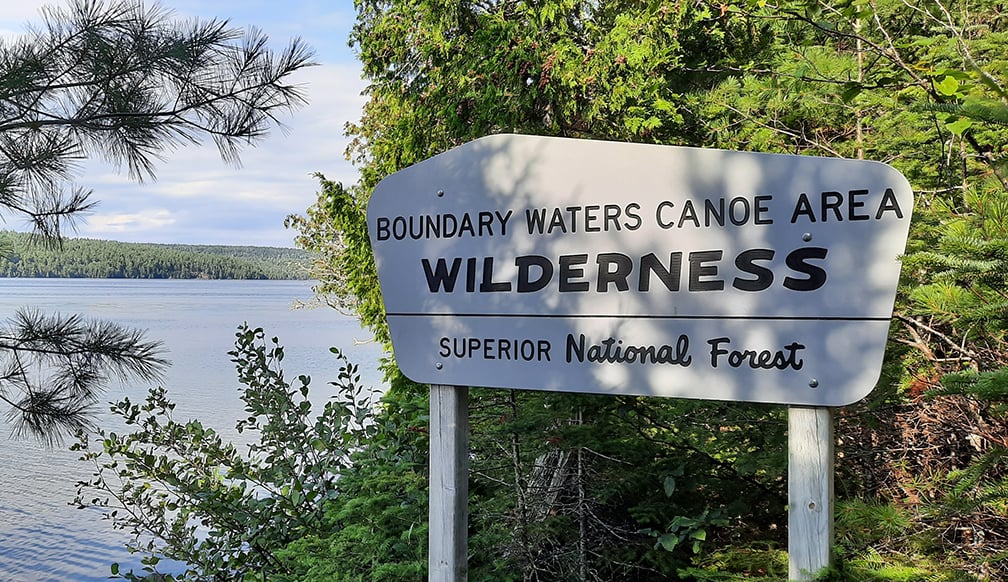Boundary Waters Canoe Area Wilderness clarifies dog leash rules – Outdoor News

Duluth, Minn. — The U.S. Forest Service added new language to Boundary Waters Canoe Area Wilderness permitting last spring, indicating that dogs must be on a leash of 6 feet or less while in developed recreation sites.
The change raised questions about whether the rule applies during bird-hunting seasons, when most dogs are off-leash trying to flush birds. Cathleen Quinn, the U.S. Forest Service’s wilderness program manager, clarified the rule and eased the concerns of those bringing hunting dogs or pets to the BWCAW.
“With respect to hunting, if you are participating in an active hunt, you can have your dog off-leash,” Quinn said. “If you are engaged in an active hunt and you’re out with a hunting dog that’s going to retrieve birds or point birds, you can have your dog off-leash.”
MORE COVERAGE FROM MINNESOTA OUTDOOR NEWS:
Flooding in southern Minnesota impacting angling, wildlife
British versus all-American Labs: Both beloved, but with some differences hunters should understand
Nearly 12,000 acres within Minnesota’s Chippewa National Forest transferred to Leech Lake Band
The regulation isn’t unique to the BWCAW or Superior National Forest, she said. It’s consistent across National Park Service properties, requiring dogs to be on a leash no longer than 6 feet in developed recreation sites, according to Quinn.
She said developed sites include campsites, boat landings, hiking trails, and fishing piers. However, if a person is actively hunting, a dog can be off-leash for hunting purposes.
Quinn added that there are other areas not classified as developed recreation sites. For instance, during duck hunting in boats, dogs can be off-leash because it is not a developed recreation site.
Before the new language was added last spring, the rule stated that dogs could be on a leash or under voice control in these sites, but this became problematic during the past four to six years, she said.
“We used to use language as long as your dog is under voice or a leash control that’s OK,” Quinn said. “But what we’re finding is that blurring is kind of making it easy for people who don’t control their pets to cause issues with either wildlife or other users or resource damage on our campsites.”
Quinn said there’s been an increase in calls about dogs interacting with humans on trails and such without being on leashes. They removed the voice-control option because dogs can get nervous in new areas and sometimes don’t respond to voice commands as easily as they would on a familiar sidewalk.
One of the biggest issues has been barking, which has become disruptive to campers in the BWCAW. Quinn recommends that dog owners try to keep barking to a minimum, as it can echo for miles across lakes, portages, and campsites.
If an officer sees someone with a dog off-leash, it is up to the officer to decide if the stop will be educational or result in a citation. Quinn said about 99% of the time, stops are educational because people usually comply after a verbal warning.
If an officer decides to write a ticket, the dog owner could face a $50 fine for having a dog off-leash in a developed recreation site.
Quinn also emphasized that dog owners need to closely monitor their pets because many have wandered off and gotten lost in the BWCAW. With abundant wildlife in the area, some pets are never found, underscoring the importance of the leash rule in campsites and recreation areas.
“It’s just that we’re starting to use the official language now so that we’re being kind of more black and white about what the regulation is and we’re clear about it,” Quinn said.
Sportsmen for the Boundary Waters Executive Director Lukas Leaf commented on the rule.
“While we recognize taking dogs into the Boundary Waters can present unintended consequences, especially when it comes to family pets not accustomed to the wilderness and the wildlife that live there, we believe the Forest Service’s new rule needs clarifying language around legally using bird dogs inside the Boundary Waters,” Leaf said. “The 1.1 million acres of huntable space in the Boundary Waters presents tremendous opportunities for public land bird hunters to enjoy the backcountry with their bird dogs. Unfortunately, the language of the new official rule creates uncertainty for hunters and gray area for conservation officers enforcing laws. This rule needs to be written in a way that leaves no uncertainty for hunters intending to legally pursue ruffed grouse, spruce grouse, woodcock, and waterfowl species inside the BWCA.”






